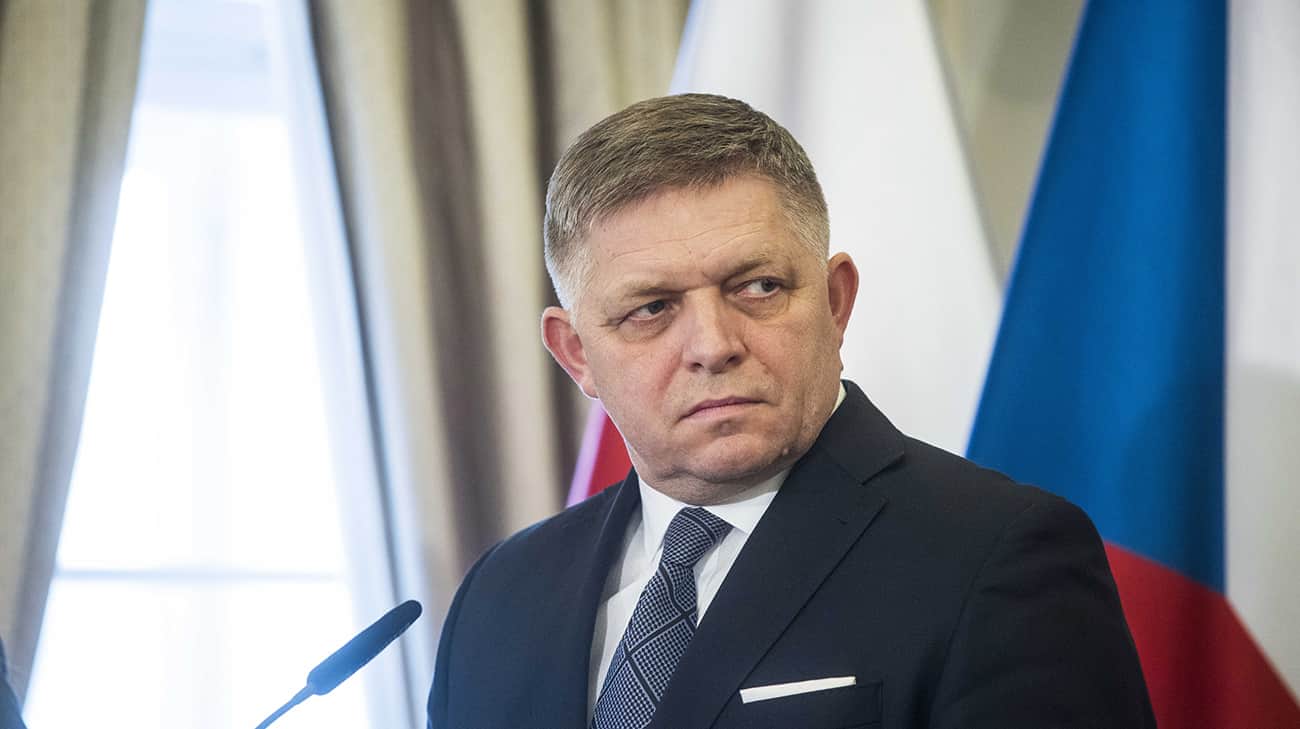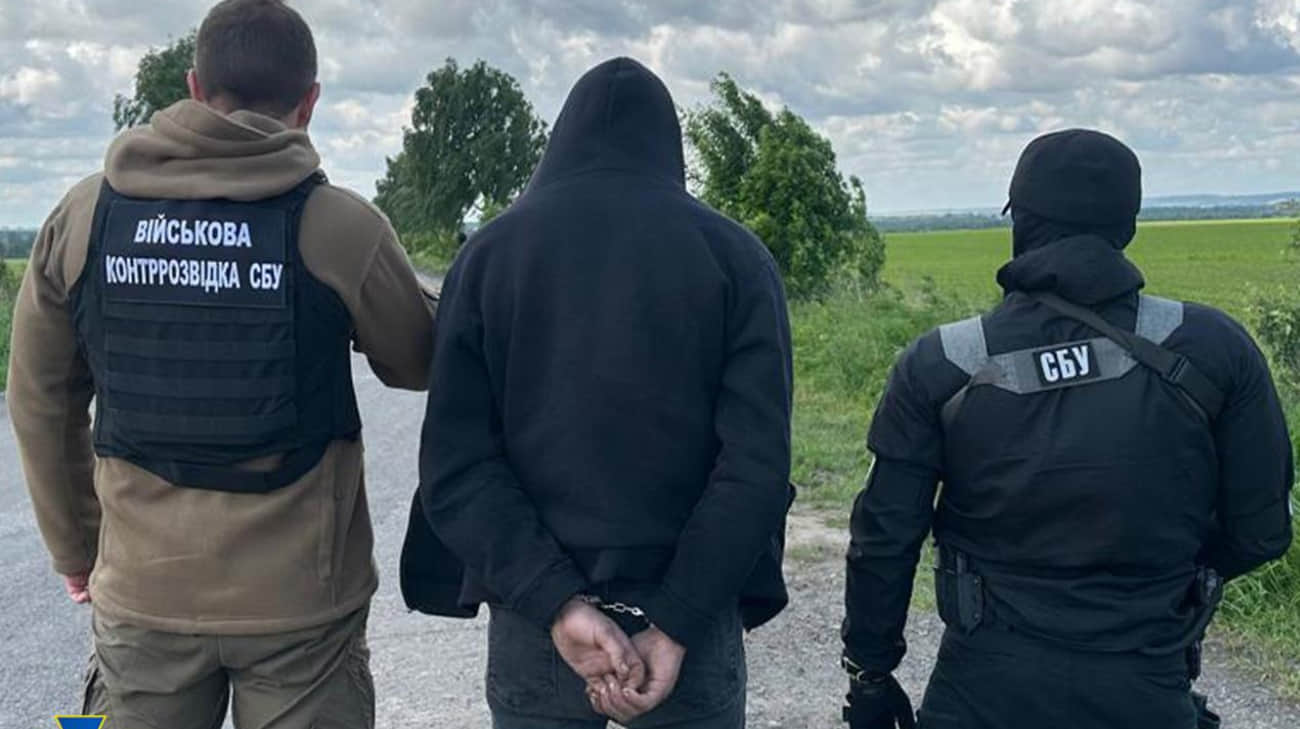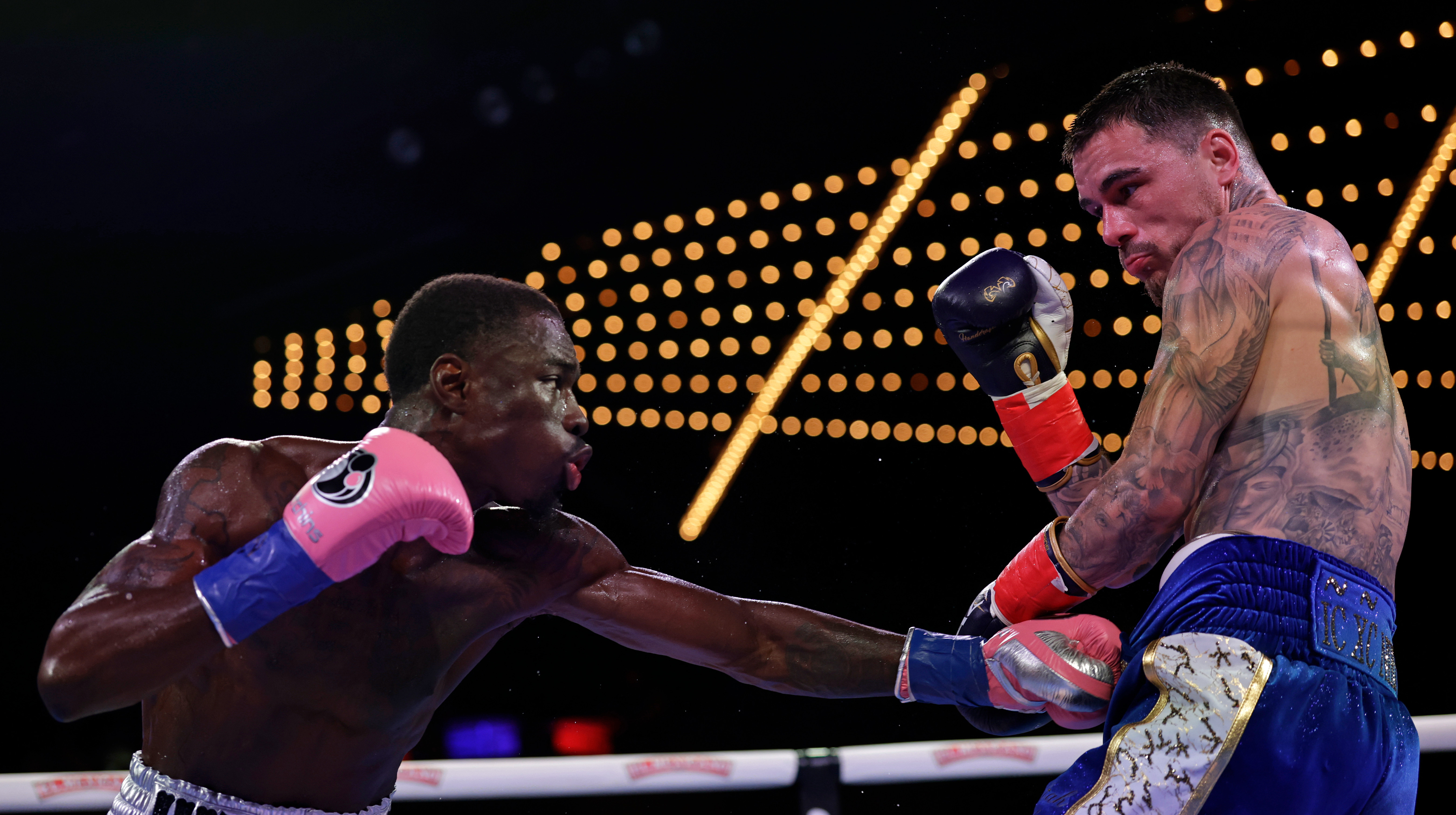5 facts about Sofia of Kiev, which was hidden by Soviet power
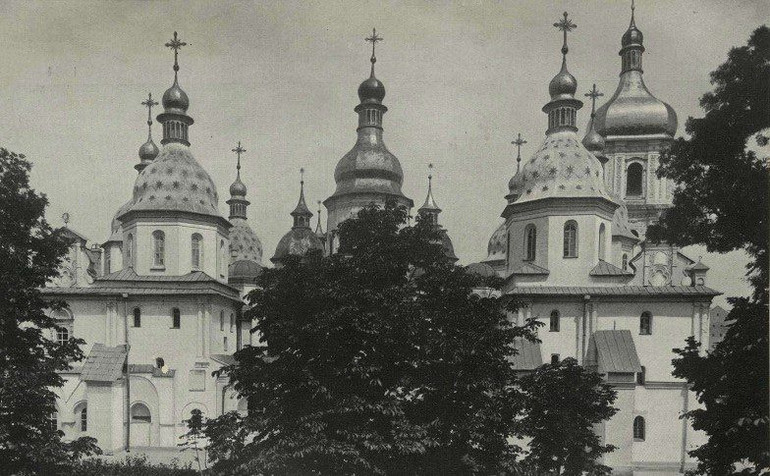
After the firing of the capital, on June 10, part of the facade of the main ancient Russian monument – Sofia of Kyiv. As a result of the explosive wave, the eaves of the central apse. How vibrations have influenced the UNESCO World Heritage Sights are now exploring experts.
However, the Russians destroy the monument for the first time. Doctor of Historical Sciences and researcher Sophia of Kiev Nadiya Nikitenkowhich has been working there for over 40 years, I am convinced that in Soviet times, the monument has been significantly destroyed due to negligence, and sometimes because of the need for propaganda.
Journalist UP. Culture Anastasia Bolshakova She talked to the researcher about the Soviet inheritance, who remained on Sofia of Kiev and about what condition the monument is now.
Soviet vacation from Moscow to Kiev
”Sofia, as they say, was not abandoned – she was protected » – Still, Nadiya Nikitenko, Doctor of Historical Sciences, and almost half a century of a guide, begin with a good story.
The Sophia Cathedral was considered a monument from time immemorial – it was the main church of Russia, the place of burial of princes, the residence of the Metropolitan of Kiev – and in the Soviet Union healed somewhat different glory. The temple was not closed, even on the contrary, opened all the doors for tourists from different republics.
”These are crowds, enormous crowds of excursions that came from Vilnius, from Moscow, from Leningrad, from Central Asia. The turn to Sofia reached from the entrance to the bell tower. There are 400 people arriving, and everyone is leading here. You know how it was for Soviet power: all Gamus – first to Sofia, then to the Lavra« , – says the researcher.
Sophia Cathedral. The west side.
Illustration from Kiev’s book by George Lukomsky
But in the circle of specialists who took care of the monument, continuous excursions and influxes of tours were rather a manifestation of consumer attitude than respect: « This really suffered from the monument itself – its architecture, the microclimate of the cathedral, the mural. For when too many people are exfoliation of mural and mosaic plain from the walls« .
Even the sound has problems: crowds, accompanied by guides, created vibration loads on the foundation of the structure, acoustic pressure due to endless conversations and rapid spread of sound inside the building.
Censorship of « religious propaganda »
What would the guides in the Cathedral of the XI century should tell? Actually not about the importance of Sofia’s temple (the wisdom of God), the symbolic meaning of construction.
”Those times were also remembered by the fact that during excursions were not allowed to talk about religion. They said, « not to conduct religious propaganda. » Employees from the Institute of Scientific atheism (and then he was subordinated to the Central Committee of the Communist Party of Ukraine, was located where the planetarium near Vladimir Hill) came to listen. More precisely, to listen to our excursions« , – says Nadiya Nikitenko.
”And God forbid, that we can use the word « temple » too often – it was considered too « shed. » It was impossible to even mention the plots of murals because it is religious content« , – she adds.

Mosaics and murals of Sofia of Kiev
Michael Stelmach
If the mention of the « temple » was heard, then the employee was summoned to the directorate, reproached and demanded not to violate the prohibition. Therefore, in the excursions the main emphasis was placed on the artistic value of the monument: architecture, mosaics, murals.
”We are talking about it now. But as soon as it came about the plot, then one had to be careful. They just said, « This is where the Annunciation is depicted. Look what a rich color scheme, what a beautiful mosaic. Here is Virgin Mary. » And all – no deeper interpretation« .
Non -obvious reasons to destroy memory
As a result of the anti-religious campaign in 1928-1941, the Soviet authorities destroyed hundreds of Ukrainian temples. In particular, Michael’s Golden -domed Cathedral, opposite Sophia of Kiev, was destroyed. In 60-70, the active destruction of the temples stopped, then they decided to act differently-not to destroy faith openly, but to continue to displace it from the life of society. The attitude of the authorities to the church has not changed: if the church was closed directly, now it was called « ordering » in the religious sphere.
The funds for restoration or conservation of monuments were not allocated. The bodies that were to protect them did not have enough authority or did not take initiatives.
”Under Soviet rule, the monuments were restored very poorly. Imagine: Zaborovsky’s gate was not restored, it was literally raised from the ruins (in the days of independence – the UP). The bread museum has been closed for decades. Metropolitan’s house after a terrible fire was also closed for many years« , – the researcher says.

Sofia Square in Soviet times
OBOZREVATEL
She also shared the story of the Soviet academician Peter Tolochkathat headed the Institute of Archeology of the Academy of Sciences 1987 to 2016. He was one of those who, according to Mrs. Nadiya, joined the formation of doctrine “Russian measure”. It was he who signed an act on the destruction of 30 boxes with human residues, which were found during archaeological research in the territory of the Sofia Reserve.
”These boxes were stored in the funds. And what did they do? They have made an act: they say, they create « dangerous conditions for storage of exhibits ». They were taken to the garden, poured gasoline and burned. Human remains were burned. It was a real sacrilege. And the act was preserved about this burning – it was signed« , – the researcher follows.
Only in 1986, after the Chernobyl accident, Sofia Kyivska remained alone from tourist noise for some time.
Restoration of Ukraine and restoration of the history of the cathedral
The year before the proclamation of Ukrainian independence, in 1990, the Sophia Cathedral and the Kiev-Pechersk Lavra were included in the UNESCO World Heritage List.
”It was recognized all over the world. Believe me, when foreigners come to the cathedral and then and now – they do not believe that this monument is a thousand years. Mosaics, murals are so well preserved. Here on the walls is all our history. And graffiti, the inscriptions of our ancestors who are hundreds of years old « .

Taras Shevchenko’s watercolor « Internal appearance of the Sophia Cathedral » (April-September 1846, Kyiv). Paper, sepia, watercolor
In 2000, Sofia Kyivska Reserve was headed by Nelya Kukovalskaya. In May this year The Ministry of Culture tried to remove her from office. However, the damage to the temple on June 10 forced the Minister of Culture Mykola Tocitsky to reject claims against the director of the Sofia Reserve and meet with her near the monument to inspect the damage together.
But returning to the 00’s: with the departure to the past of Soviet power and changes in leadership, Sophia’s research has been significantly intensified.
”Now we can say directly: it is not true that Sofia Kiev is the same as Sofia in Novgorod (Russia) or in Polotsk (Belarus). No! Kyiv Sofia – for generations older than them.
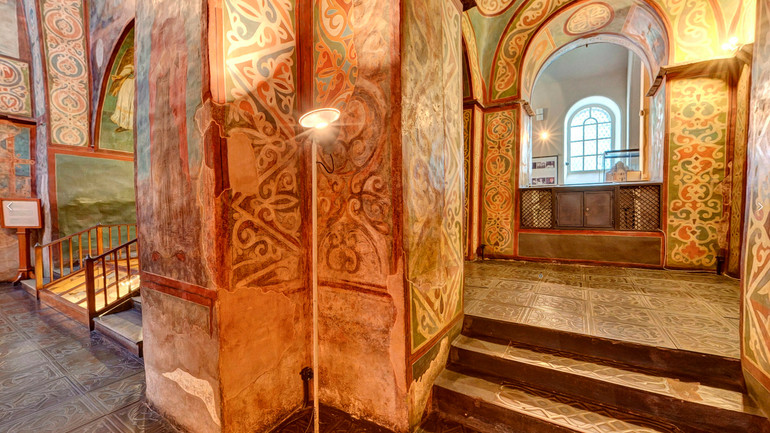
Sofia frescoes
Sofia Kyivska National Reserve
Why was it so filed? Because it corresponded to the Soviet doctrine: they say, we are all « brotherly peoples », all « at the same time » developed, we all came out « from one cradle« , – says Nikitina.
Nadiya Nikitenko, together with his colleagues, managed to prove that Sofia of Kiev was laid in the early XI century. It was Mrs. Nadiya who proved in the academic way that Sofia was laid by Prince Vladimir the Great. It happened in 1011 – this is evidenced by graffiti, murals, mosaics. And his son Yaroslav in 1018 completed the construction.
It was after this study that the whole world was celebrated by Sofia of Kyiv in 2011 by the decision of UNESCO. It was official recognition at the international level.
”This is one of the most important transformations in recent decades. As an employee of the Sofia Reserve, I can say that literally in my eyes has changed all the life of the monument for the better. And even now, during the war, we try to keep Sofia as best you can« , – added Nikitenko.
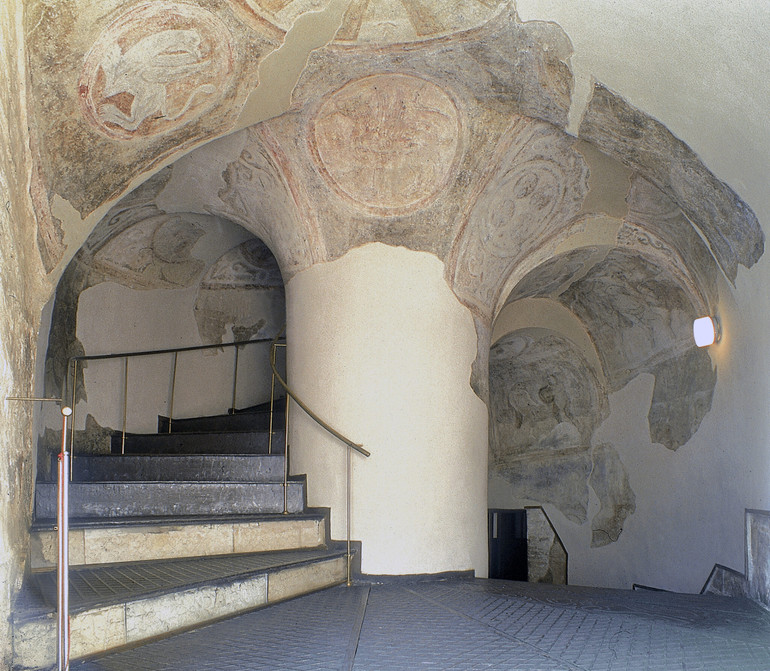
New murals found in Sofia’s interiors.
Sofia Kyivska National Reserve
Epilogue. Sofia Kiev now
As a result of the massive shelling, the eaves on the apse of Sofia of Kiev partially collapsed. The Ministry of Foreign Affairs, the Council of Churches of Ukraine, and through the visit of UNESCO representatives, on the day of recording this conversation, the temple was closed for visitors.
”It was alarmed not only us, but all humanity. Because there is a long -standing belief: as long as Sofia stands – Kyiv will stand. And with him – and we« .
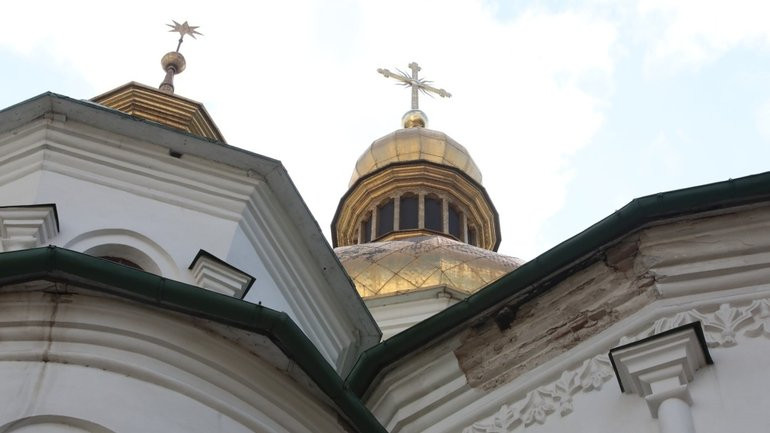
Damage to the facade as a result of Russian shelling
Now worship in Sofia is not underway as in Soviet times. But the reason is not atheism.
”Sofia is a thousand years. As an old person, he needs special care. It should be literally « not bothering » so that it has been standing for centuries. If the church operated here – daily services, the masses of people – it would destroy the microclimate. And he, in turn, would harm mosaics, murals, architecture« .
The parishioners found an alternative that satisfied both the clergy and researchers of the National Reserve « Sofia Kyivska ». The ensemble of the temple includes a refectory of the Sofia Monastery, and it is the church of Yaroslav the Wise. There are departments every day.
”We have a very good relationship with the Orthodox Church of Ukraine. We hold joint conferences, consult with each other, cooperate as equal partners. That is now there is a place for both the Church and Science. And most importantly – the monument is stored. And it is very, very important« .

